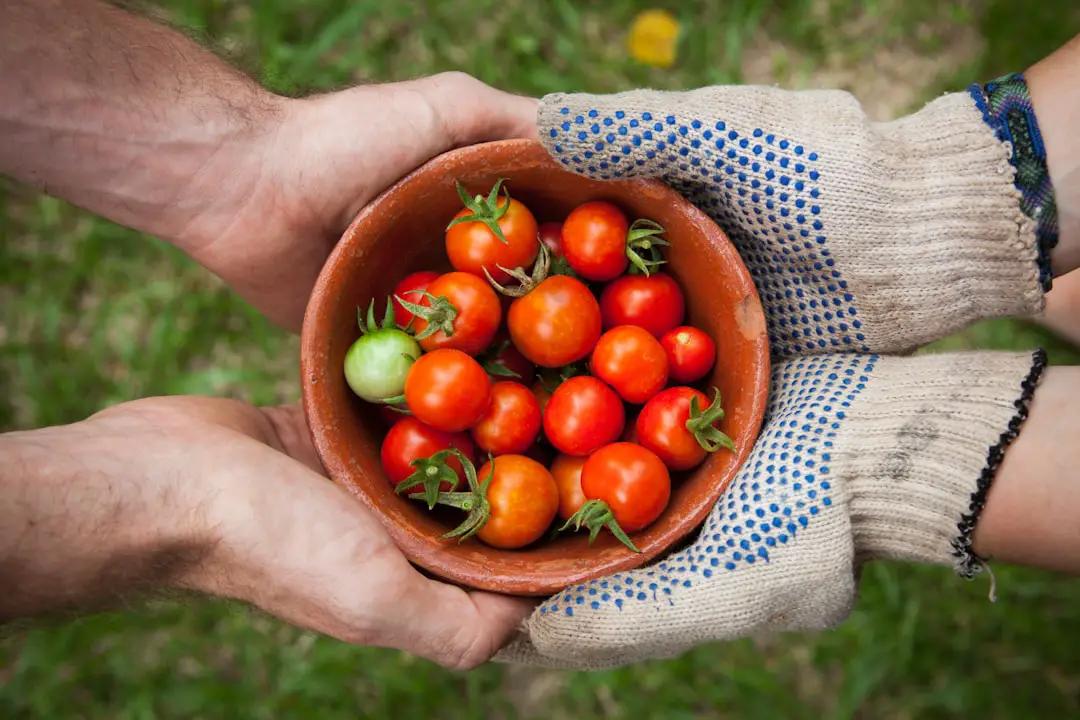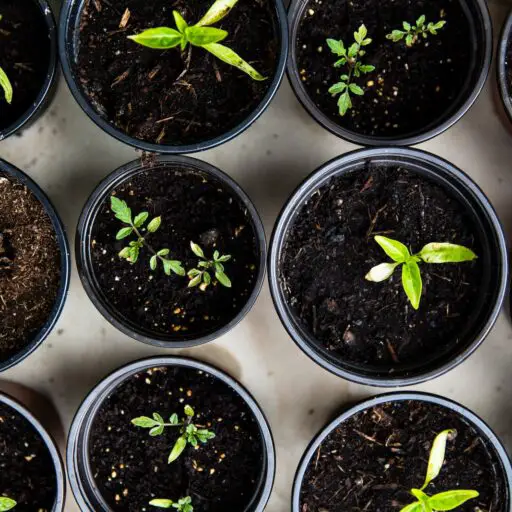Support our educational content for free when you purchase through links on our site. Learn more
Imagine a vibrant community where neighbors unite to transform barren land into a flourishing vegetable garden, all while sharing tools and resources. This is not just a dream; it’s a powerful example of collaboration and sustainability in action! Community members building a vegetable garden using shared tools is a testament to the strength of collective effort and the joy of nurturing both plants and relationships. In this article, we’ll explore 10 inspiring examples of how communities come together to create green spaces that feed both the body and the soul.
Did you know that community gardens can increase access to fresh produce by up to 40% for local residents? 🌽 This statistic highlights the profound impact these gardens can have on food security and community health. As we dive into real-life success stories, you’ll discover how shared tools not only make gardening more accessible but also foster a sense of belonging and cooperation among neighbors. Ready to dig in? Let’s explore the incredible world of community gardening!
Key Takeaways
- Collaboration is Key: Community gardens thrive on shared resources and collective effort, making gardening accessible to everyone.
- Cost-Effective Solutions: Sharing tools reduces individual costs and promotes sustainable practices, benefiting both the environment and community members.
- Building Connections: Gardening together fosters friendships, strengthens community ties, and creates a supportive network among participants.
- Sustainable Practices: Community gardens promote eco-friendly gardening techniques, enhancing local food security and environmental health.
Ready to start your own community garden? Check out our recommended gardening tools and supplies to get started on your green journey! 🌿 Shop Gardening Tools
Table of Contents
- Quick Tips and Facts
- Understanding Community Gardening: A Shared Journey
- The Power of Collaboration: Building a Vegetable Garden Together
- Essential Tools for Community Gardening: What You Need
- Step-by-Step Guide to Starting Your Community Vegetable Garden
- Benefits of Using Shared Tools in Community Gardening
- Sustainable Practices in Community Gardening
- Engaging Community Members: Tips for Success
- Real-Life Success Stories: Inspiring Community Gardens
- Challenges and Solutions in Community Gardening
- The Role of Local Organizations in Supporting Community Gardens
- Conclusion
- Recommended Links
- FAQ
- Reference Links
Quick Tips and Facts 🌱
- Did you know? Community gardens can increase your access to fresh, local produce, reduce your carbon footprint, and boost your mood! 🤯
- Starting a community garden? Check out our article about How to Start a Sustainable Community Garden: 10 Essential Steps 🌱 2025.
- Shared tools are a great way to save money and build community. Consider a tool lending library! 🧰
- Don’t be afraid to ask for help! Experienced gardeners are often happy to share their knowledge. 😊
- Celebrate your successes! Community gardening is about more than just growing food – it’s about growing together. 🎉
Understanding Community Gardening: A Shared Journey 🤝
Community gardening is more than just digging in the dirt – it’s about cultivating connections, fostering sustainability, and reaping the rewards of shared effort. It’s about transforming vacant lots into vibrant green spaces, building bridges between neighbors, and creating a source of fresh, healthy food for everyone to enjoy. 🥬🍅🥕
What Defines a Community Garden?
A community garden is a shared space where people come together to grow fruits, vegetables, flowers, or herbs. It’s a place where individuals, regardless of age, background, or gardening experience, can learn, grow, and connect with nature and each other.
The Essence of Collaboration
At its core, community gardening thrives on collaboration. It’s about sharing resources, knowledge, and the workload. Imagine a group of neighbors, brought together by their love for gardening, working side-by-side, their laughter echoing through the air as they plant seeds, water their plots, and share stories. That’s the magic of community gardening! ✨
The Power of Collaboration: Building a Vegetable Garden Together 🧑🌾🧑🌾
Imagine this: a sunny Saturday morning, the air buzzing with activity. Neighbors gather, tools in hand, ready to transform a vacant lot into a thriving vegetable garden. This is the power of collaboration in action!
Shared Vision, Shared Responsibility
Building a vegetable garden together requires a shared vision and a commitment to shared responsibility. It’s about coming together to decide what to plant, how to maintain the garden, and how to share the bounty.
From Seed to Harvest: A Collective Effort
Every step, from preparing the soil to harvesting the vegetables, becomes a collective effort. Some members might have a knack for building raised beds, while others excel at nurturing seedlings. The beauty lies in combining these diverse skills to create something truly special.
Essential Tools for Community Gardening: What You Need 🧰
A successful community garden relies on a collection of essential tools. While individual gardeners might have their favorites, having a shared set of tools fosters a sense of ownership and makes gardening accessible to everyone.
Basic Tools for Every Community Garden
Here’s a list of must-have tools:
- Shovels and Spades: Essential for digging, turning soil, and transplanting.
- Rakes: Perfect for leveling soil, removing debris, and spreading mulch.
- Hoes: Ideal for weeding, creating furrows, and aerating soil.
- Watering Cans and Hoses: Crucial for keeping those plants hydrated.
- Pruning Shears: Essential for maintaining plants and harvesting herbs.
- Wheelbarrows: Lifesavers for transporting soil, compost, and harvests.
- Gloves: Protect those hands from thorns and blisters.
Tool Sharing: Building Community and Saving Resources
Sharing tools not only reduces individual costs but also promotes a sense of community. Consider creating a tool lending library within your garden, fostering a spirit of sharing and collaboration.
Step-by-Step Guide to Starting Your Community Vegetable Garden 🗺️
Ready to turn your community gardening dreams into reality? Here’s a step-by-step guide to get you started:
- Gather Your Tribe: Connect with neighbors, friends, and local organizations who share your passion for gardening.
- Find Your Perfect Spot: Scout for potential locations, considering factors like sunlight, water access, and soil quality.
- Lay the Groundwork: Prepare the site by clearing debris, building raised beds (if needed), and amending the soil.
- Choose Your Crops Wisely: Select vegetables that thrive in your climate and align with your community’s preferences.
- Plant with Purpose: Follow proper planting techniques, spacing plants appropriately to ensure optimal growth.
- Water, Weed, and Nurture: Establish a regular watering schedule, keep those weeds in check, and provide necessary nutrients.
- Protect Your Bounty: Consider natural pest control methods and implement measures to deter critters.
- Harvest and Celebrate: Enjoy the fruits (and vegetables!) of your labor! Share the harvest, host potlucks, and revel in your accomplishments.
Benefits of Using Shared Tools in Community Gardening 🧰🤝
Sharing tools in a community garden isn’t just practical – it’s a powerful way to build stronger bonds and foster a sense of shared ownership. Let’s explore the multifaceted benefits:
1. Cost-Effective Gardening for All
Gardening tools can be expensive, especially for those new to the hobby. Shared tools eliminate the financial barrier to entry, making gardening accessible to everyone in the community.
2. Reduced Waste and Environmental Impact
Sharing tools reduces the need for individual purchases, minimizing the overall consumption of resources and reducing waste. It’s a win-win for your wallet and the planet! 🌎
3. Fostering a Sense of Community
Sharing tools naturally encourages interaction and collaboration among community members. It creates opportunities for exchanging gardening tips, sharing stories, and building lasting friendships.
4. Promoting a Culture of Sharing and Cooperation
A shared tool system fosters a culture of sharing and cooperation, strengthening community bonds and creating a sense of collective responsibility for the garden’s success.
Sustainable Practices in Community Gardening ♻️
Community gardens are inherently eco-friendly, but by embracing sustainable practices, you can minimize your environmental impact and create a truly thriving ecosystem.
Water Conservation: Every Drop Counts
- Mulch, Mulch, Mulch: Apply a thick layer of organic mulch to retain moisture, suppress weeds, and regulate soil temperature.
- Water Deeply, Less Often: Encourage deep root growth by watering deeply and less frequently.
- Harvest Rainwater: Install rain barrels to collect precious rainwater for irrigating your garden.
Soil Health: The Foundation of a Thriving Garden
- Compost Like a Pro: Create nutrient-rich compost from kitchen scraps and yard waste to nourish your soil.
- Embrace Cover Crops: Plant cover crops during the off-season to improve soil structure, prevent erosion, and add nutrients.
- Practice Crop Rotation: Rotate crops each season to prevent soil depletion and reduce pest and disease pressure.
Natural Pest Control: Working with Nature
- Invite Beneficial Insects: Attract beneficial insects like ladybugs and lacewings to control pests naturally.
- Companion Planting: Plant compatible species together to deter pests, attract pollinators, and enhance growth.
- Neem Oil and Insecticidal Soap: Opt for natural pest control solutions like neem oil and insecticidal soap to protect your plants.
Engaging Community Members: Tips for Success 🎉
A thriving community garden is about more than just the plants – it’s about the people! Here’s how to create a welcoming and engaging space for everyone:
1. Communication is Key 🗣️
- Establish clear communication channels (email, social media, bulletin boards) to keep members informed about garden activities, events, and important updates.
- Encourage open dialogue and feedback to ensure everyone feels heard and valued.
2. Foster a Sense of Ownership 💪
- Assign roles and responsibilities to empower members and give them a sense of ownership over the garden.
- Create opportunities for members to share their skills and knowledge through workshops, demonstrations, or mentoring programs.
3. Celebrate Successes and Build Community Spirit 🥳
- Organize potlucks, harvest festivals, or educational workshops to bring members together and celebrate their accomplishments.
- Create a welcoming and inclusive atmosphere where everyone feels comfortable participating and contributing.
Real-Life Success Stories: Inspiring Community Gardens 🌟
Across the globe, community gardens are transforming neighborhoods, fostering connections, and creating a more sustainable future. Here are a few inspiring examples:
1. The Edible Schoolyard Project 🍎
Founded by renowned chef Alice Waters, the Edible Schoolyard Project integrates organic gardens and cooking classes into school curriculums, empowering students to make healthier food choices and connect with nature.
2. The Ron Finley Project: Gardening for Gangsters 🌱
Ron Finley, also known as the “Gangster Gardener,” transformed a neglected strip of land in South Central Los Angeles into a thriving community garden, demonstrating the power of gardening to heal communities and empower individuals.
3. The High Line Park, New York City 🛤️
Once an abandoned elevated railway, the High Line has been transformed into a stunning urban park featuring lush gardens, art installations, and breathtaking city views, proving that even in the concrete jungle, nature can thrive.
Challenges and Solutions in Community Gardening 🤔
Like any worthwhile endeavor, community gardening comes with its own set of challenges. But with a proactive approach and a spirit of collaboration, these obstacles can be overcome.
Challenge 1: Funding and Resources 💰
Solution: Explore creative fundraising ideas like crowdfunding campaigns, grant applications, or partnerships with local businesses.
Challenge 2: Maintaining Participation and Enthusiasm 😄
Solution: Organize engaging events, create a welcoming atmosphere, and recognize and appreciate the contributions of all members.
Challenge 3: Dealing with Pests and Diseases 🐛
Solution: Implement integrated pest management strategies, encourage biodiversity, and seek advice from experienced gardeners or local extension offices.
The Role of Local Organizations in Supporting Community Gardens 🤝
Local organizations play a vital role in supporting community gardens by providing resources, expertise, and advocacy.
1. Community Centers and Nonprofits
- Offer space for workshops, meetings, and tool storage.
- Connect gardens with volunteers and funding opportunities.
- Provide educational resources and gardening expertise.
2. Urban Farming Organizations
- Offer technical assistance on sustainable gardening practices.
- Provide access to seeds, tools, and other resources.
- Advocate for policies that support urban agriculture.
3. Local Government Agencies
- Provide access to vacant lots and public land for gardening.
- Offer grants and funding opportunities for community garden projects.
- Implement policies that promote urban agriculture and community gardening.
Conclusion 🎉

In conclusion, community members building a vegetable garden using shared tools is not just an example of collaboration; it’s a celebration of community spirit, sustainability, and shared responsibility. By pooling resources, knowledge, and labor, you can create a thriving garden that not only yields fresh produce but also strengthens bonds among neighbors.
Positives of community gardening with shared tools include cost-effectiveness, reduced environmental impact, and the fostering of social connections. However, challenges such as maintaining participation and managing shared resources can arise. With proactive communication and a commitment to collaboration, these challenges can be effectively addressed.
So, whether you’re a seasoned gardener or a curious beginner, we encourage you to dive into the world of community gardening. Your local community is waiting for you to join the fun, grow together, and reap the rewards of your hard work! 🌱
Recommended Links 🛒
-
👉 Shop Gardening Tools:
- Gardena Garden Tools: Amazon | Gardena Official
- Fiskars Gardening Tools: Amazon | Fiskars Official
- Radius Garden Tools: Amazon | Radius Official
-
Books on Community Gardening:
FAQ ❓

What are the benefits of community members sharing tools in a vegetable garden?
Sharing tools in a community garden offers several benefits:
- Cost Savings: Reduces the financial burden on individual gardeners, making gardening accessible to all.
- Resource Efficiency: Minimizes waste and promotes sustainable practices by reducing the number of tools purchased.
- Skill Sharing: Encourages knowledge exchange and skill development among members, fostering a supportive learning environment.
Read more about “How to Start a Community Garden: 7 Essential Steps for Success 🌱 …”
How does a community vegetable garden using shared tools foster collaboration and social connection?
A community vegetable garden creates a space where individuals come together with a common goal. By sharing tools, members engage in collaborative tasks, which naturally leads to conversations, friendships, and a sense of belonging. This shared experience cultivates a supportive network, enhancing social ties and community cohesion.
What are the key elements for successfully managing shared tools in a community garden?
To effectively manage shared tools, consider the following:
- Inventory System: Keep a detailed list of tools available, their condition, and who is responsible for them.
- Maintenance Schedule: Regularly check and maintain tools to ensure they remain in good working order.
- Clear Guidelines: Establish rules for borrowing, returning, and caring for tools to prevent misunderstandings.
Read more about “🌱 10 Community Gardening Plants That Will Make Your Patch Pop!”
What are some other examples of community-led initiatives that promote sustainable living?
Community-led initiatives include:
- Community Supported Agriculture (CSA): Members buy shares in local farms, receiving fresh produce throughout the season.
- Neighborhood Swap Events: Organizing events where community members can exchange goods, services, or skills.
- Local Clean-Up Days: Mobilizing residents to clean up parks, streets, and public spaces, fostering pride in the community.
How does a community vegetable garden with shared tools contribute to local food security and environmental sustainability?
Community vegetable gardens enhance food security by providing access to fresh, locally grown produce, reducing reliance on commercial food systems. Shared tools promote sustainable gardening practices, such as organic farming and resource conservation, which benefit the environment. By fostering community engagement, these gardens also empower individuals to take control of their food sources and promote healthier eating habits.
Reference Links 📚
- Community Gardening Toolkit | MU Extension
- American Community Gardening Association
- Sustainable Agriculture Research & Education
- Food and Agriculture Organization of the United Nations
Explore these resources to deepen your understanding of community gardening and its myriad benefits! 🌍

